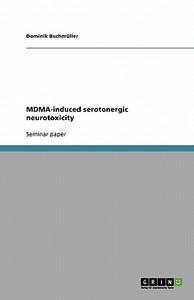
Mdma-induced Serotonergic Neurotoxicity
- Editore:
Grin Publishing
- EAN:
9783640439669
- ISBN:
364043966X
- Pagine:
- 32
- Formato:
- Paperback
- Lingua:
- Tedesco
Descrizione Mdma-induced Serotonergic Neurotoxicity
Seminar paper from the year 2009 in the subject Psychology - Biological Psychology, grade: A (100%), New College Durham (Duke University, Department of Psychology and Neuroscience), course: Behavior and Neurochemistry, language: English, abstract: It is the aim of this paper to review and integrate relevant empirical findings and theoretical discussions concerning the molecular and cellular mechanisms and effects of MDMA-induced 5-HT neurotoxicity in laboratory animals. 3,4-methylenedioxymethamphetamine (MDMA) is a derivative of the synthetic psychostimulant methamphetamine (METH). It also shares some structural and pharmacological properties of mescaline, a naturally occurring psychedelic hallucinogen. At the molecular level, all three substances resemble the monoamine neurotransmitters epinephrine (E) and dopamine (DA). They mimic the neurophysiological actions and effects of E and DA, as well as serotonin (5-HT). METH and MDMA do so by binding to, and reversal of monoamine-specific transporter proteins at the presynaptic plasma membrane. While the psychological effects of METH are mainly due its action as a DA release agent and reuptake inhibitor, MDMA primarily affects the serotonergic system. It has a high affinity for the serotonin-specific transporter (SERT), which carries it into the presynaptic neuron. Inside the cell, MDMA inhibits the vesicular monoamine transporter type 2 (VMAT2), pre-venting intracellular 5-HT from being stored in synaptic vesicles. In addition, MDMA phos-phorylates SERT, which causes a reversal of its reuptake function and, hence, non-exocytotic efflux of 5-HT by the means of passive diffusion. Because neurotransmitter release normally only occurs in case of an action potential, and the released transmitter is partly reabsorbed and recycled, the reverse functioning of SERT depletes 5-HT stores. The equivalent effect of METH via reversal of the DA transporter (DAT) has been linked to its neurotoxic properties (Yamamoto & Zhu, 1998). As a derivative of methamphetamine, MDMA is sometimes believed to have inherited the severe dopaminergic neurotoxicity of METH and its parent compound amphetamine. Such neurotoxic potential has been found in mice but not in rats (Colado, O¿Shea, and Green, 2004), and remains to be established for non-human primates. The probably most prominent publication claiming that MDMA caused irreversible damage to primate DA neurons (Ricaurte et al., 2002) was shown to be in error and had to be retracted. Instead of a recreational dose of MDMA (3 2 mg/kg), the monkeys had, in fact, been given METH, which, at such doses, is known to be neurotoxic in primates (Villemagne et al., 1998). [...]


